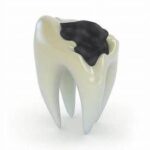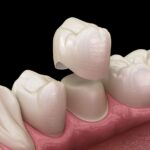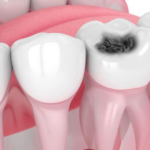
Toothaches are simple to ignore—until they’re not. A tiny cavity doesn’t sound like a huge problem at first, particularly if you’re not hurting. But cavities progress, and not addressing them can have serious repercussions for your oral and overall health. In this blog post, we discuss what cavities are, what occurs when they’re left untreated, and how dental fillings can avoid much worse issues.
What Is a Cavity?
A cavity, or dental caries or tooth decay, is a little hole in your tooth that occurs when plaque—a thin, sticky film of bacteria—digests sugar and releases acid. The acid erodes the enamel, the hard outer shell of your tooth, slowly over time.
Early on, a cavity may be painless, hence individuals usually don’t know they have one. As it advances, however, the destruction goes deeper, into the inner structures of the tooth, such as the dentin and ultimately the pulp, where nerves and blood vessels are located.
Ignoring a cavity is like ignoring a roof leak—it does not get any better. Below is a list of what can happen when cavities are left alone:
1. Tooth Sensitivity
As the enamel erodes, hot, cold, or sweet foods and beverages can begin to cause pain.
2. Pain and Uncomfort
As the decay works its way towards the nerves, the tooth becomes painful—particularly when chewing or when subjected to extreme temperatures.
3. Infection and Abscess
Bacteria can infect the pulp. This can cause an abscess (pocket of pus) that causes swelling, pain, and even cause the infection to spread to other areas of the body.
4. Tooth Break or Loss
Weak from decay, the tooth cracks or breaks. It may eventually have to be removed if damaged beyond repair.
5. Costly Treatments
What might have been treated with an easy dental filling could now need root canal treatment, a crown, or even a dental implant—more complicated and expensive procedures.
Why Dental Fillings on Time Are Important
Dental fillings are a conservative and efficient method of treating early-stage cavities. Here’s why they benefit:
Prevents Further Decay: After the decayed area is removed and the tooth is filled, the destruction is stopped.
Restores Tooth Function: Fillings restore structure and strength so you can chew and bite normally.
Prevents Pain and Infection: Early treatment spares you from pain and invasive interventions in the future.
Cost-Effective: Fillings are less expensive than treatments you’ll require for extensive decay.
Signs You Might Need a Filling
Holes or dark spots that you can see on your teeth
Sensitivity of your teeth to hot, cold, or sweets
Pain when you chew
Rough edges you can feel with your tongue
A lingering toothache
Even if you don’t feel any of these symptoms, regular check-ups at the dentist can catch cavities early—before you even feel anything.
Conclusion
Cavities don’t go away on their own—they get worse. What starts as a tiny spot can snowball into serious dental trouble if ignored. The good news? Timely fillings can restore your tooth and prevent more invasive (and expensive) treatments later.
With over a decade of experience in cosmetic and restorative dentistry, Dr. Nupur is known for her gentle approach and precision-driven care. At Dentique Dental Clinic, Wakad, she offers personalized dental solutions tailored to your needs—whether it’s routine check-ups, smile makeovers, or advanced restorative treatments. Your oral health is in expert hands.




